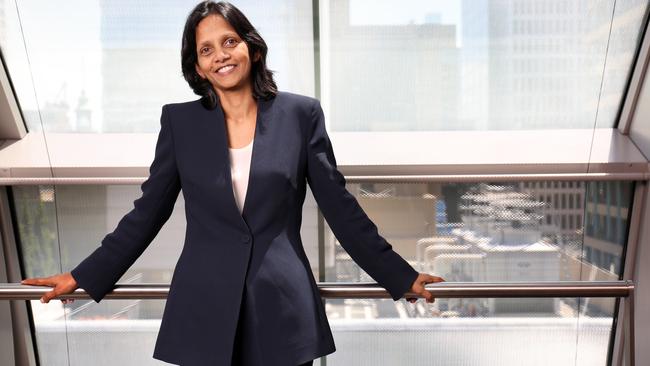Macquarie aims to be clean energy power
Macquarie Group is preparing to deploy its hefty balance sheet to become a green-energy power.

Macquarie Group is preparing to deploy its hefty balance sheet to allow its green investment arm to capitalise on the boom in solar, wind and waste-to-energy developments as the world transitions to non-carbon sources of power.
The world’s biggest manager of infrastructure assets scooped up Britain’s Green Investment Bank in a $4 billion deal nearly two years ago, setting the scene for the bank to rapidly increase its exposure to clean-energy financing and development.
Macquarie’s balance-sheet positions in green energy total $1.3bn, including wind farm and solar development investments.
Yet with $24bn of dry powder for new green power projects around the globe, the bank under new chief executive Shemara Wikramanayake is preparing to accelerate its sway in the sector at a time of rapid change in the grid as the costs of renewables continue to fall.
“There is a long way to run as the world transitions from carbon to non-carbon energy sources and the development and operation of green assets,” Macquarie’s Asia chief executive, Ben Way, told The Australian.
“I think we have got more than enough capital region by region plus our own balance sheet to be able to fund those opportunities. But there is also a big pool of capital, so we need to find opportunities for them.”
Global clean energy investment totalled $US332bn ($470bn) in 2018, the fifth year in a row in which investment topped $US300bn, although it was down about 8 per cent on the previous year, partly due to falling technology costs, according Bloomberg New Energy Finance figures.
Solar continued to lead the charge with $US130bn of investment, with wind just below that level at $US128bn. Investment in biomass and waste-to-energy rose 18 per cent to $US6.3bn while energy investment in Europe jumped 27 per cent to $US74.5bn due to strong growth in offshore wind.
Ms Wikramanayake, whose rise to the top of Australia’s investment bank is examined in The Deal, is the former head of Macquarie Investment Management and its infrastructure and real assets unit that invests in green infrastructure.
The bank’s green credentials have been significantly boosted by Ms Wikramanayake’s membership of bodies such as the Bill & Melinda Gates Foundation and World Bank-backed Global Commission on Climate Adaptation. This fund looks to help nations prepare and managing risks associated with climate change.
Late last year, Ms Wikramanayake joined the The Climate Finance Leadership Initiative, spearheaded by Bloomberg founder Michael Bloomberg, formed at the request of UN Secretary-General Antonio Guterres. Its founding members are among the world’s most powerful finance executives, including Goldman Sachs CEO David Solomon and AXA chief Thomas Buberl.
The Climate Adaptation aims to manage and boost resiliencies to the risks associated with climate change from floods, droughts, rises in sea levels and storms. Among the “roadblocks” highlighted by the group are the failure of governments and businesses to incorporate climate change risks into their social and economic development plans and investments.
The Climate Finance Leadership Initiative has a mandate to accelerate investments in clean energy and climate solutions, and facilitate private financing objectives included in the Paris Agreement.
The CFLI will deliver an interim report on best practices and obstacles to deploying climate finance to G7 finance ministers in July.





To join the conversation, please log in. Don't have an account? Register
Join the conversation, you are commenting as Logout